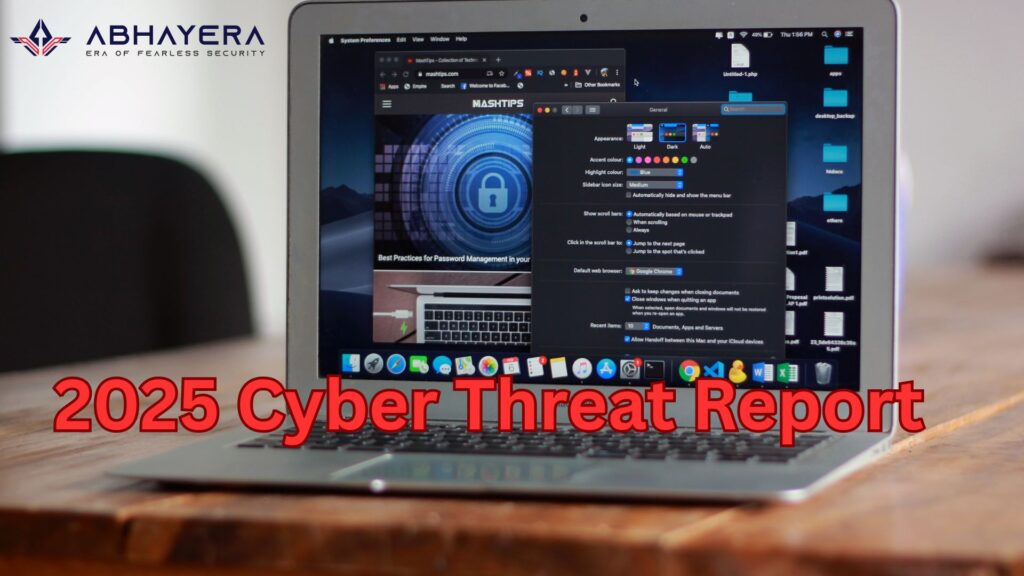
As we step into 2025, the cybersecurity landscape reveals a stark truth: while technology and defense capabilities are advancing, so too are the methods and ambitions of threat actors. Drawing from reports, the data tells a story of accelerating risk, operational exposure, and a widening gap between threats and preparedness.
This article brings together the most relevant findings to help organizations understand what’s coming—and what to prioritize.
1. AI Is Redefining Both Defense and Offense
AI is transforming cybersecurity in two opposing directions. Organizations that extensively implemented AI and automation in their security operations saved an average of $2.2 million per breach, according to sources. These tools not only accelerated detection and containment by up to 100 days, but also reduced costs across prevention, detection, investigation, and response workflows.
However, generative AI is also making phishing more convincing and scalable. Attackers now craft credible, grammatically flawless emails in multiple languages, removing one of the few remaining signals that users could rely on.
Key Insight: Organizations without AI integration face slower breach detection and significantly higher breach costs. Defensive AI is no longer optional—it’s a requirement.
2. Credential-Based Attacks Are Silent and Expensive
Breaches involving stolen or compromised credentials remain the most persistent and costly. On average, it took 292 days to detect and contain such breaches. Phishing was nearly as prevalent and equally costly at $4.88 million per incident.
The real concern lies in the undetected dwell time attackers gain via credential abuse—months of access before triggering an alert.
Recommended Focus: Strengthening IAM programs, enforcing MFA, and conducting regular credential audits must be high-priority initiatives in 2025.
3. Operational Technology (OT) Security Lags Behind
Despite the increasing threats targeting industrial environments, the reports show that 49% of organizations still operate at Level 1 or 2 maturity—indicative of either ad hoc responses or minimal process standardization.
Industrial sectors experienced the highest cost increase in 2024, with an average breach cost surge of $830,000. Yet, many organizations avoid advancing their security posture due to concerns over plant downtime and legacy infrastructure constraints.
Strategic Shift Needed: OT cybersecurity must evolve from being an IT-adjacent concern to a core part of risk management and business continuity planning.
4. Shadow Data and Hybrid Environments Increase Exposure
The rise of ungoverned, unmanaged “shadow data” is an emerging threat. 35% of breaches involved shadow data, and these incidents were 16% more expensive than average breaches. Hybrid environments (combining on-premises and cloud infrastructure) also took longer to contain, exposing visibility gaps.
Action Point: Data classification, environment mapping, and centralized monitoring are foundational steps toward reducing hybrid infrastructure risks
5. Healthcare Still Faces the Steepest Costs
Though the average cost of a healthcare breach dropped 10.6%, it still remains the costliest industry, at $9.77 million per incident. The combination of legacy systems, regulatory complexity, and the critical nature of patient data continues to make healthcare a high-value target.
Takeaway: Sector-specific risks must be reflected in tailored controls and response plans—not just generalized security programs.
6. Inaction Is the Greatest Vulnerability
Despite the widespread awareness of breach impacts, only 12% of breached organizations reported full recovery. Meanwhile, 63% of organizations admitted to passing the cost of a breach directly to customers via increased pricing.
In the OT space, downtime costs often exceed the entire cybersecurity budget—forcing plant operators to choose between production and protection.
Reality Check: Post-breach financial impacts extend far beyond technical remediation. Brand trust, customer churn, and lost productivity are increasingly material risks.
7. The Skills Gap Is Fueling the Fire
Reports highlighted a 26.2% increase in organizations citing severe cybersecurity staffing shortages. Breaches in understaffed environments cost $1.76 million more on average.
Surprisingly, the report revealed that despite recognizing these staffing gaps, most organizations ranked “training” and “automation” as higher ROI than hiring more staff. None of the executive or management participants identified “increased staffing” as a top investment area.
Implication: Strategic investment in upskilling internal teams and leveraging automation must work in tandem to address the ongoing talent shortage.
Conclusion: 2025 Requires a Sharper Strategy
The data makes one thing clear: cyber threats are not only increasing in volume—they’re becoming more complex, persistent, and business-disruptive. The cost of a breach is no longer measured solely in dollars—it’s measured in downtime, customer trust, regulatory fines, and lost market opportunity.
Your cybersecurity roadmap in 2025 should prioritize:
- Extensive AI and automation integration
- Credential and access management hygiene
- OT cybersecurity program maturation
- Discovery and control of shadow data
- Cross-functional recovery planning
- Closing the talent gap through training and augmentation
At Abhayera Technology Solutions, we are committed to helping organizations make informed, data-driven security decisions. If you’re re-evaluating your security strategy for 2025, let’s talk.
